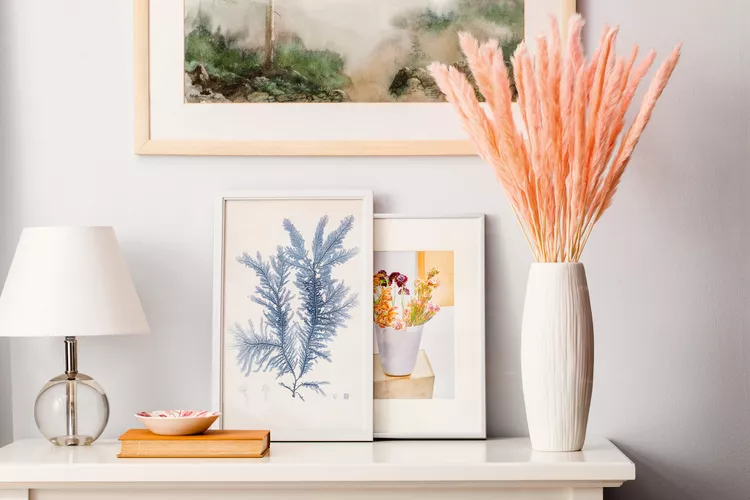Pink pampas grass looks magical and airy in a vase. The feathery, larger-than-life plumes decorate homes, weddings, and photo shoots. They're a staple of boho-style and modern designs and make a beautiful addition to a bubblegum-colored arrangement of dried flowers that never dies.
Given this plant's popularity, you might be tempted to include it in your landscape, too. Before you start digging, remember that the seed heads of pink pampas grass may look angelic, but the plant has some devilish characteristics you'll want to avoid.
What is Pink Pampas Grass?
Pampas grass (Cortaderia selloana) is native to South America, specifically Brazil, Argentina, and Chile. It got its name from the Pampas Plains. This tough grass thrives in heat and plenty of bright sunlight. It grows quickly into a big, bold plant. Once established, the grass can grow an inch a day. A clump of pampas can expand to about eight feet wide and up to 12 feet tall (there are shorter varieties, too). The plumes themselves grow between one and three feet in length.
There are several varieties of pampas grass. Some are big, some are small, and a few are pink. Types like Rosea and Pink Feather showcase bright pink blooms. Other pampas grass plumes look white, silver, cream, or bluish-green. There's even a purple one called Andean pampas grass that can grow up to 22 feet tall.
Pink Pampas Grass Can Be Male or Female
The extra fluffy pink pampas grass seed heads used in homes and at events are from female plants. The plants can be female or male, each with distinctive plumes. The female plumes are much bigger and more wispy-looking. Male plumes are more slender because they lack the additional feathery hairs around the seeds. The only way to determine if a pampas grass plant is male or female is to wait for it to bloom.
Is Pink Pampas Grass Invasive?
Some states like California and Texas have deemed that pink pampas grass is an invasive species. In these places, the plant proliferates and spreads fast. It seeds itself freely into natural ecosystems and wild plant communities. Once it takes root, pampas grass degrades grazing lands and native plant habitats and becomes a fire hazard.
Other states, such as Washington and Oregon, consider it a noxious weed. This means it's not a native plant and harmful, but the state has the potential to control or get rid of the species. Pampas grass is banned in Hawaii to help protect its native flora and fauna.
Other Pink Pampas Grass Problems
While the plumes of pampas grass are soft and fuzzy, the rest of the plant is quite the opposite. The leaves are razor-sharp and serrated like a knife. Therefore, it's considered a dangerous garden plant for people and animals.
When handling the plant, you should take precautions to protect your skin from cuts by wearing long sleeves, pants, and gardening gloves. Pampas grass also has a high pollen count, so if you have allergies, brace yourself. According to the Asthma and Allergy Foundation of America, this plant can cause sneezing, congestion, hay fever, and itchy eyes, nose, throat, ears, and mouth.
How to Remove Pink Pampas Grass
It's not easy to get rid of pink pampas grass. It's a perennial plant where it's hardy in Zones 7-11, so it will come back every year. The root system of this grass can grow over a foot deep. It may take a combination of chemical and physical actions to do the job completely.
For small plants (under three feet):
- Wear protective clothing such as long sleeves, pants, glasses, and gloves.
- Cut off the top of the plant.
- Pull up the root system (if the root system is still intact, see steps for large plants).
- Place the cut stems and roots into a plastic bag, then dispose in the trash.
For large plants:
- Wear protective clothing such as long sleeves, pants, glasses, and gloves.
- Cut the plant stems to two inches above the ground.
- Apply an herbicide containing glyphosate to the remaining stems.
- Place the cut-off stems into a plastic bag and dispose of them in the trash.
- Repeat the herbicide treatment one week later to ensure the roots are entirely killed.
Alternatives to Pink Pampas Grass for Your Garden
Lots of other ornamental grasses offer beautiful plumes without getting carried away. Plus, the foliage on these alternative grasses isn't as sharp as pink pampas grass.
- Feather reed grass
- Cord grass
- Switchgrass
- Blue fescue
- Deer grass
- Japanese forest grass




















